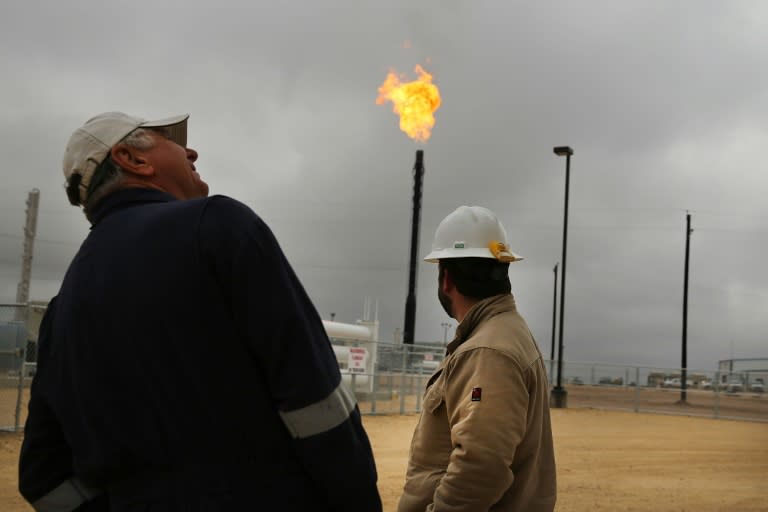WASHINGTON (AFP) — Flaring — burning off unwanted natural gas from oil and gas wells — releases five times more of the potent greenhouse gas methane into the atmosphere over the United States than previously assumed, according to a study published Thursday.
The result is a far greater impact on climate change, with the warming potential between the stated and actual effectiveness of flaring across the United States equivalent to putting 2.9 million more cars onto the road each year, the paper in Science said.
A team led by Genevieve Plant at the University of Michigan carried out airborne sampling over the Permian Basin and Eagle Ford Shale in Texas, as well as the Bakken Formation that straddles North Dakota and Montana. These together account for 80 percent of US flaring.
“We employed a small airplane equipped with highly sensitive sensors to measure the concentrations of methane and carbon dioxide directly downwind of flare stacks,” Plant told AFP.
“Over the course of our airborne survey, we sample around 300 distinct flare stacks throughout the highest-flaring regions in the US.”
The fossil fuel industry and US government work on the assumption that flares remain lit and destroy methane, the predominant component of natural gas, with 98 percent efficiency.
But according to the study, a combination of unlit flares and some flares that were burning highly inefficiently meant that on average, flares destroyed just 91.1 percent of methane.
That implies methane emissions from flaring in the United States, which ranks among the top five nations for flaring activity, are five times as high as currently officially reported.
Digging deeper into the numbers, the team found that most flares actually operate at 98 percent efficiency.
But a modest number of malfunctioning flares operate at efficiency as low as 60 percent, and 3-5 percent of flares are unlit — directly venting unburned gas into the atmosphere.
Flaring is an inherently wasteful activity — as the natural gas associated with oil extraction could be used for productive purposes.
